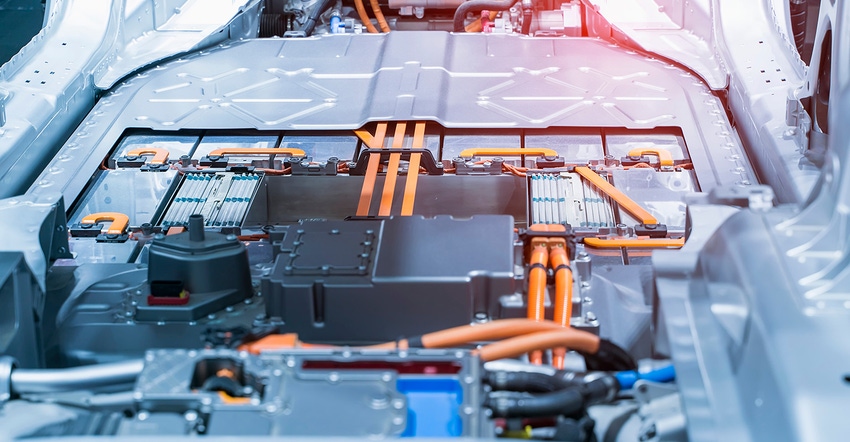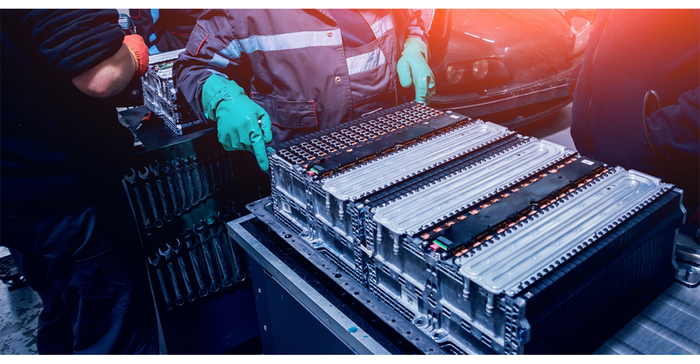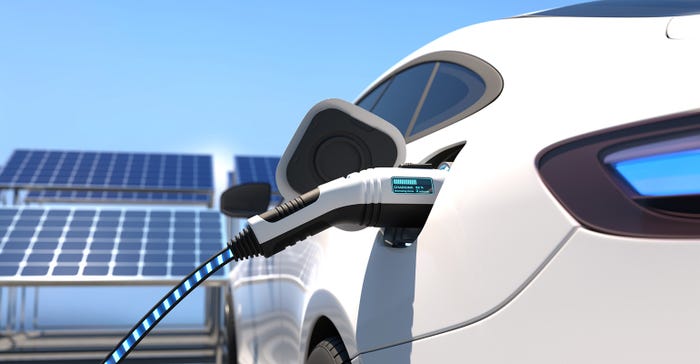Rockwell’s battery expert gives insights into the lithium-ion battery recycling world, from today’s battery recycling processes to challenges and future opportunities.

Lithium and the other metals used in lithium-ion batteries are generally difficult and expensive to acquire at one end of the battery production process—and much strategizing is done by battery makers to secure their supply chains. But just as much strategizing is required for dealing with the other, far end of battery production: How to handle the battery and its component materials at the end of its useful life. Reuse? Recycle? What is the most conscientious—and cost-effective—way to deal with these materials?

To get some answers, Battery Technology spoke to a battery expert from Rockwell Automation,—an industrial automation company with over 20 years of experience in the battery industry. Stephanie Van Kirk, Market Development Manager - EV Battery, spoke about the role of Rockwell in the battery recycling world, today’s recycling methods, Rockwell’s approach to transforming waste into the next generation of EV batteries, and more.
Where does Rockwell Automation play within the whole battery space?
Van Kirk: I'm glad you asked that because we don't get this question enough. Rockwell Automation provides a lot of different automation and digital transformation solutions across the value chain for electric vehicles (EVs) and batteries. We participate in everything from mining and refining to the chemical industry. Nowadays, there is much focus on reclaiming materials from the cathode side of batteries. At Rockwell, we play within the chemical industry, where companies take raw materials like lithium carbonates, manganese, nickel, and cobalt, depending on the chemistry.
And then, you can further process those into cathode materials, which is like the secret sauce for battery companies, because that cathode material composition will be unique from battery manufacturer to battery manufacturer. Even beyond that, we have some customers within the battery cell factory itself and then as well as EV assembly, which is also going to include module and pack manufacturing. When we talk about EV batteries, people automatically assume it's just the module and pack that goes directly into the vehicle, but there are the individual constituent parts, the individual cells, that battery manufacturers produce.
What are the different types of manufacturing processes involved?
Van Kirk: Within Rockwell Automation, we distinguish between process and discrete manufacturing. Process manufacturing, which you might see on the chemical side, is very much like following a recipe for mixing substances with several steps—all the different things that would happen within a series of reactors, mixing tanks, etc. Making a liquid electrolyte, a chemical process for example.
On the discrete side, there are individual things that are assembled and packaged and that you move from station to station. Once you get to the point of the individual cell, that is then considered a discrete piece that moves from the next step to the next step.
In between, you have a hybrid method that is both process and discrete, which kind of combines all of that, which you see at the front end of battery manufacturing. There are three main steps within battery manufacturing, and the first step within that will be electrode manufacturing, which is hybrid manufacturing and combines both process and discrete methodologies, and cell assembly and activation and finishing which is discrete.
All of that is on the manufacturing side. We’ve also had some new opportunities in battery recycling, which also lends itself to those previous three manufacturing methods I described earlier. On the front end of recycling, it is a little bit more discrete because you're disassembling and deactivating, and then on the back end of that, you are processing the black mass, which calls for a more chemical process type of method.

What is Rockwell’s approach to transforming waste into the next generation of batteries?
Van Kirk: We want to make sure that batteries are not just going directly into a landfill because that defeats the purpose of a circular economy. So, the question is, how do we deal with those batteries once they've reached end of life? And specific to an electric vehicle, what do we do with that spent battery?
There are realistically two ways that a battery that's reached its end of life can be handled. The first way is to reuse it, and the second is recycling. You can break a larger battery pack down into discrete modules comprised of cells or break it all the way down to the cell level, depending on the actual application.
Regarding EV batteries that have reached end of life, again, there's reuse as well, but they can also go straight to recycling. I think that's going to be crucial to consider as we face some of the potential shortfalls in material accessibility that we have coming up for critical materials like lithium, specifically nickel, cobalt, and graphite, which is found in the anode.
Right now, the costliest of these materials will be lithium, considering that for lithium-ion operations it can take up to seven years to develop and produce battery-grade lithium. There's a disconnect regarding how quickly the industry is ramping up its production and how quickly it can get materials online to support that growth. We need to have the ability to reclaim those materials, and realistically that's probably going to be through recycling.
What are the main processes that battery recyclers are using today?
Van Kirk: There are three primary processes that we're using to recycle lithium-ion batteries today: Pyrometallurgy, hydrometallurgy, and direct recycling. There are many commonalities between the three of them. All of the processes deal with a largely mechanical step, which will be disassembly and deactivation. And depending on the recycling process [which is not standardized], materials are handled from Point A, which is the entire battery pack to Point B, which is the reclaimed materials. There's much variability because processes are pretty unique from recycler to recycler.
What are the challenges and opportunities for battery manufacturing?
Van Kirk: Some big glaring challenges can be addressed within the next two to five years. One is optimizing how we produce batteries. Some of it can go as simple as making sure we're reducing the footprint because it is inherently an energy-intensive process primarily because energy needed for dry rooms to control temperature and humidity and at the back end of battery manufacturing, there's a series of charge and discharge charges that happen in order to activate the batteries.
I think across the board, we want to make sure we're looking at energy consumption within the battery-making process. There are opportunities within cell-assembly; we want to make sure that the process is super clean and does not affect the product equipment reliability and the product performance reliability.
We need to make sure that we're optimizing production, our production numbers, and keeping machines uptime up as much as possible. But then again, make sure that you only have a little debris or other contaminants. Shortening formation time is a big challenge too, because it can take several weeks to accomplish, whereas the front end of the battery manufacturing process can take just a couple of days.
Specifically, in terms of battery recycling, there are a lot of challenges from the infrastructure standpoint. Take a look at lead acid batteries; they get pretty widely recycled. If you own a car, even if you own an EV, there's likely a lead-acid battery in that vehicle. Approximately 5% of lithium-ion EV batteries are recycled today while on the other hand, 95% of lead acid batteries are being recycled today. I think there's a lot of opportunity here. We can certainly make this push with lithium-ion batteries.

It's a little simpler with a lead-acid battery, but with EV batteries we need to figure out exactly how recycling will play out. Which end-user responsibility should it be? Is it on me as the customer, who doesn't have any of the infrastructure? Or does it go back to the vehicle manufacturer? Or does it go back to the battery manufacturer? That’s something that needs to be understood.
And then, the front end of the battery recycling is manual. So, there's got to be a way that we can leverage that. There are lots of smart brains out there and we need them to figure out how to automate that better. I think that also lends itself to talking to product design engineers about designing for recyclability while making sure the battery is safe to be in a vehicle and going through all the shock and vibration that it needs to.
Anything else you would like to add?
Based on all the places Rockwell Automation plays in mining and refining chemicals, battery manufacturing, EV manufacturing, and recycling, there is for sure a lot of opportunity for Rockwell. Maintaining that circular economy is important. I think that idea is getting traction in Europe and now getting more traction here in North America, based on some of the legislation that has been passed recently here in the US. Holistically, I think as an industry, as a system, we'd have to approach it similarly to how we've approached lead-acid battery recycling.
About the Author(s)
You May Also Like





